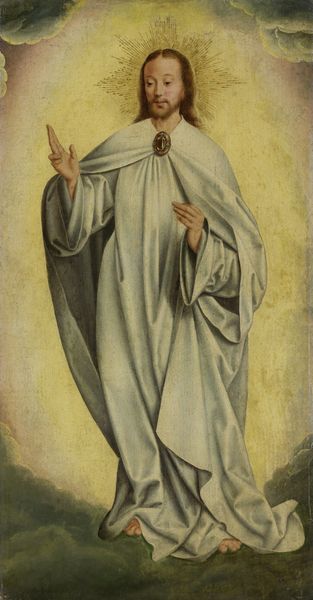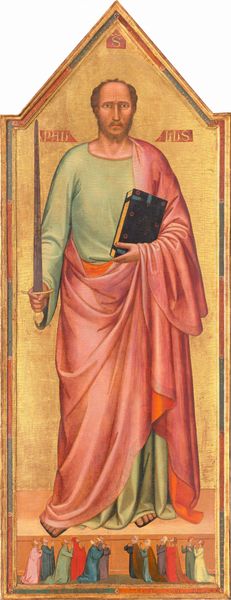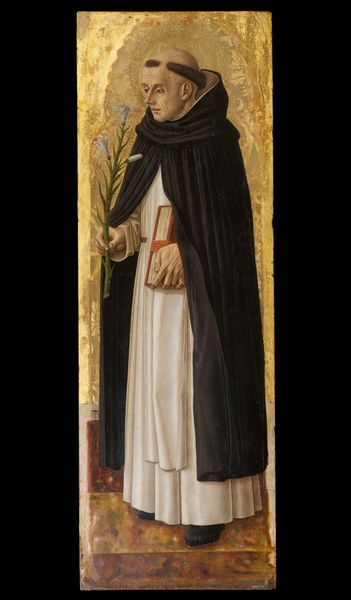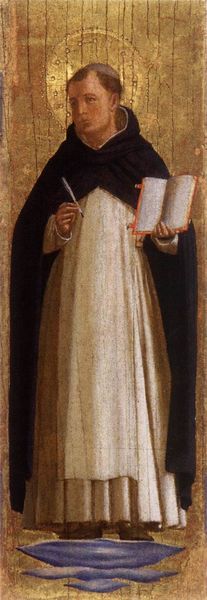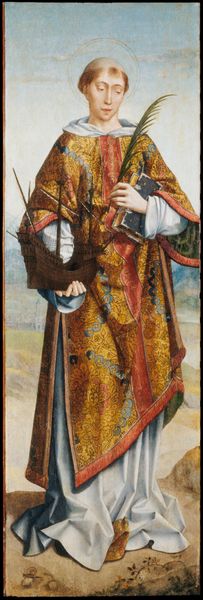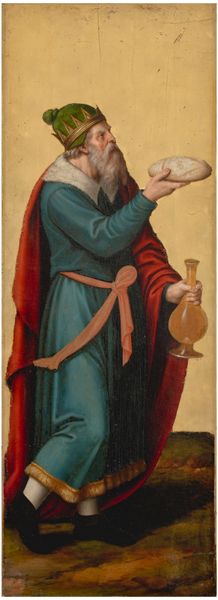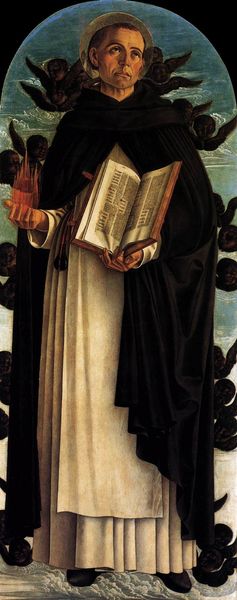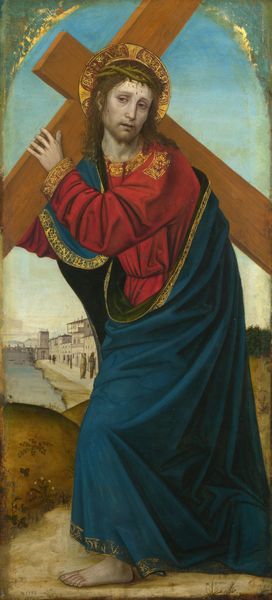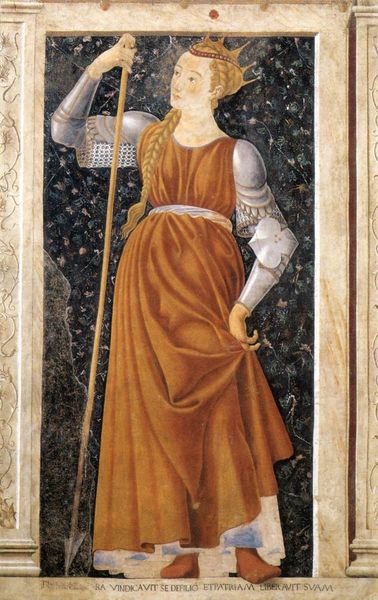
The Theological Virtues: Faith, Charity, Hope 1495 - 1505
0:00
0:00
painting, oil-paint
#
portrait
#
allegory
#
painting
#
oil-paint
#
sculpture
#
figuration
#
oil painting
#
history-painting
#
academic-art
#
italian-renaissance
#
early-renaissance
Dimensions: (1) 29 1/8 x 17 7/8 in. (74 x 45.4 cm); (2) 29 1/8 x 18 in. (74 x 45.7 cm); (3) 29 1/8 x 18 in. (74 x 45.7 cm)
Copyright: Public Domain
Curator: This painting strikes me immediately as possessing an almost unsettling serenity. The woman's expression, while gentle, feels distant, self-contained. Editor: Well, that sense of composure might stem from the subject matter. What we’re looking at is a painting dating back to the late 15th, early 16th century called "The Theological Virtues: Faith, Charity, Hope." It's currently held at the Metropolitan Museum of Art. Curator: And there she is, personifying these virtues. I see the symbols, of course – the cross, the chalice, even the small dog. But there’s something about the bare feet and her plain dress juxtaposed with the sumptuous folds of fabric that complicates the reading. It feels… intentional. Editor: It speaks to the broader historical context doesn't it? Consider the rise of humanist thought during the Renaissance and the era's effort to re-engage with classical antiquity. The way the figure is depicted— almost sculptural, in its form—it's indicative of that aesthetic. I see a deliberate departure from the more heavily stylized religious iconography of the preceding centuries. Curator: I agree; there's an undeniable classical influence in the composition and the way light falls on her. The symbolism too… it isn't just about faith in the divine, but a belief in humanity's potential for goodness and grace. The cross signifies sacrifice, faith, yes, but the chalice with the grapes points towards communion, community. Editor: Yes, this is early Renaissance; while dogma still dominated artistic and political choices, there was the ever-present march towards nascent scientific curiosity and societal liberation. The art that survives today are mostly the art chosen for patronage, giving these works specific significance in terms of taste-making and wealth display, as well as a means for both artists and clients to advance specific cultural ideas. Curator: Precisely, art shaping collective understanding and aspiration. Editor: A point well illustrated. Curator: The power of the symbol endures, even as its interpretation evolves with the world around it. Editor: Art both reflects and shapes the very narratives we tell ourselves.
Comments
No comments
Be the first to comment and join the conversation on the ultimate creative platform.
